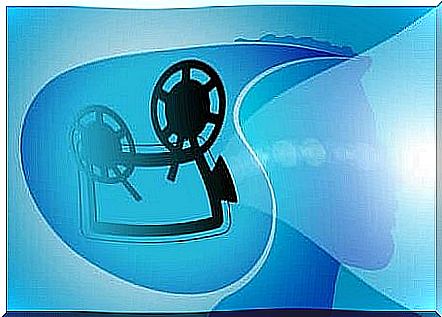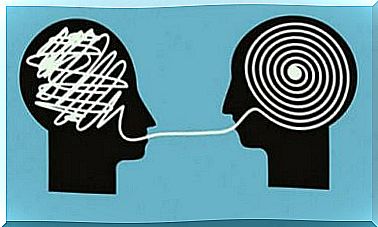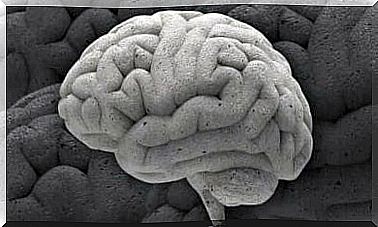Chris Argyris’ Closing Ladder

Everyone does. We are still making movies in our heads about our own future. Some of them are worthy of an Oscar. You imagine catastrophic futures, create drama where there is nothing, and come up with weird explanations for things around you. These baseless and often meaningless deductions are the basis of the subject of our article today: Chris Argyris’ closing ladder.
If the name does not sound familiar, he was the man who proposed human behavior theory for organizations. A psychologist, economist and Harvard professor, Argyris made a name for himself by helping us understand the connection processes between people, how we make decisions and how they affect us in different social environments.
One of Dr. Argyri’s most interesting contributions was his theory of conclusions. In other words, the way we make sense of things in our minds and how they affect our actions. This is a fascinating topic for reasons that we can all understand. After all, how many times have you interpreted things in ways that were not only wrong and made you feel bad, but that also led to very bad decisions?
People constantly make up stories in their heads about the people and the events around them. You imagine that your partner is lying to you, your two colleagues hate you, or that your teacher is looking for you. Such conclusions affect you in two ways: 1) they limit your quality of life because they are often untrue and 2) you are stuck in vicious cycles of suffering because you give value to ideas that have no basis. Let’s dive a little deeper into it.

The closing path
Humans are not the most pragmatic beings. We often put two and two together and get… five. Last week, when you saw the neighbor come crying out of his house, you decided that he must have left his girlfriend. Or when your boss was arguing with someone at work, you told yourself he was going to quit and you should look for another job as soon as possible.
Drawing conclusions, drawing your own conclusions and inventing stories in your mind is very, very human. Everyone does it to some degree. However, some people are particularly good at producing mental films. This phenomenon occurs for a few reasons.
- The brain does not like uncertainty or not knowing anything. To solve this problem, it draws on a mixture of objective observations, plenty of imagination and conclusions that are not necessarily logical.
- It is also important to point out that the world is moving faster these days. In one day you get so much information and stimuli that you are under a lot of pressure to quickly draw conclusions and act. That is where a large part of our biggest problems lie.
- The second reason is that our thoughts become faster, but less reflective.
How these factors can be counteracted
All of these factors can lead to serious misunderstandings. After all, you end up mistakenly assigning characteristics to people and situations, which not surprisingly cause problems. One way to be more distant and have more control over these processes is to learn about theoretical approaches to these human tendencies. In this case, a useful theory is Chris Argyris’ closing ladder. Argyri’s work can help you gain a better understanding of how your brain works when it comes to decision making.
What is Argyris’ Closing Ladder?
Chris Argyris and Peter Senge proposed and explained this theory in their book entitled The Fifth Discipline: The Art and Practice of the Learning Organization. The theory was designed in the context of organizations, and tried to explain why people make bad decisions in the workplace.
The authors used the metaphor of a ladder to explain the process by which people reach certain conclusions. The steps on the ladder of conclusions represent the following:
- Observe what is around you.
- Select specific data or information about what you see.
- Assign meaning to this data or information.
- Make assumptions.
- To draw conclusions based on your beliefs.
- To take some kind of action based on these conclusions.
Your faith affects this whole process. It determines how you select specific information and ignores the rest. It also filters your reality and often makes you jump from an observation to a conclusion of a millisecond.
How to use Argyris’ closing ladder to your advantage
Now you know that the brain does not tolerate uncertainty, which is why it often jumps to quick (and often incorrect) conclusions. You also know that this process leads to decisions that can be harmful and create conflict with other people.
Chris Argyris’ closing ladder provides some strategies for avoiding hasty conclusions. His theory allows for decisions and actions that are more objective and come from important reflection. This is how:
The six steps for better decision making
The ladder of closure gives you a certain level of responsibility and mental effort on your part. Being able to stop before you assume things and open your mind will help ensure that you do not draw the wrong conclusions.
Here are the steps you should take for more accurate conclusions:
- The first step on the ladder. Observe the facts in an objective way. Try to put your faith aside for a moment and not assume anything.
- Second step. Do not write off information. Sometimes you get rid of certain information because it does not fit into your particular worldview. Try to stay objective.
- Third step. When you see things, your brain will automatically give them meaning. When you start assigning things meaning, you may ask yourself why you choose one opinion over another. Be critical of your own thought process.
- Fourth step. Once you have assigned something to something, you start making assumptions. Ask yourself if your assumption is based on facts you have seen, or on what you believe.
- Fifth step. If you have reached certain conclusions, you can take them through a filter. Filter out your beliefs and feelings. Look at them through an objective lens. Do you still think you’re right?
- Sixth step. Behavior. Do you act on your feelings or on objective information? Try to act in a way that suits your perceived reality. When you get carried away by emotions, it is very easy to say or do something you want to regret. Be caring.
Conclusion
In conclusion, we have all created these stories in our heads that have very little to do with reality. They are imaginary, but they can hurt yourself and others.
Try to avoid these situations by slowing down. Try to be objective. Leave your assumptions and prejudices at the door. You will be happier, and so will those around you.









